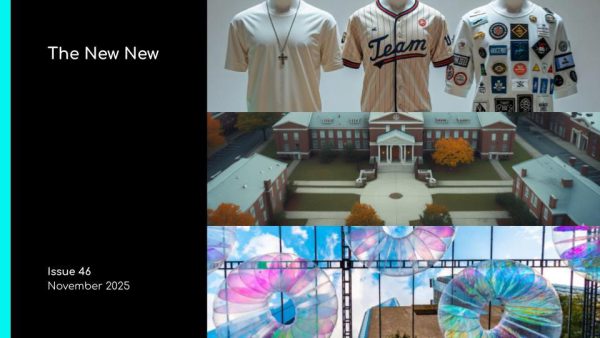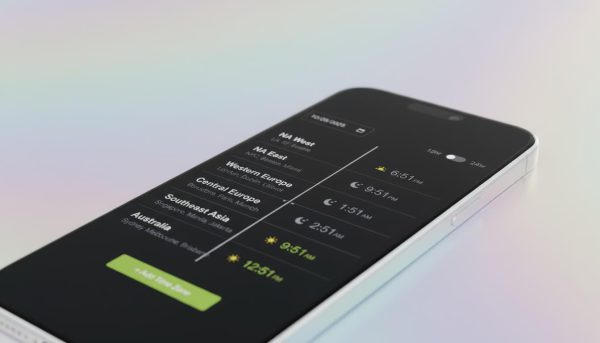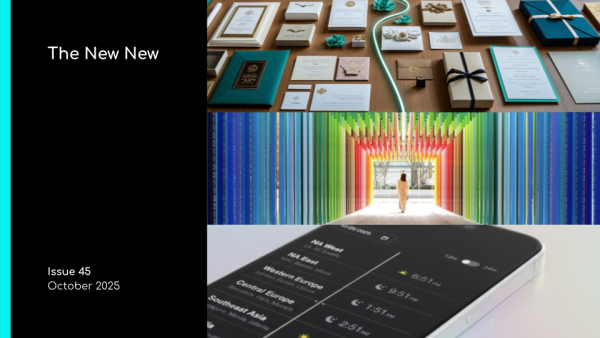Five Big Transformations Driving the Future of Virtual Events
The first half of 2020 has shown us that change is the ultimate constant. With constant change comes new opportunities to learn, design, and drive innovation within virtual and digital-first events.

As the wild west of virtual and hybrid events turns into a new frontier of opportunity, new success paths are emerging. To unpack where these trails are leading, I sat down (virtually) with our teams at Opus and unpacked the five hottest questions our clients are asking.
What has been the biggest learning during this shift into virtual and digital-first events?
There are key similarities between virtual and in-person events—people want the same content, networking, and experiences that define great events. Digging deeper, we see there is a single, most significant shift that is changing how we architect our events.
Pre-COVID, our society was based on the Experience Economy—a cultural force that fundamentally valued “experiences over things.” In that economy, a brand’s events were the chance to get away, have an experience, and make some memories.
We’ve now shifted to an Attention Economy. Today’s currency is attention. We, as individuals, will invest our attention with a brand for their event until something else demands our attention in the space around us. Virtual attendance means it’s a bit trickier to mitigate wandering attention, so instead we demand attendee focus by infusing value in other ways:
In this system, valuable moments can be created with a variety of psychological triggers:
- Fear of missing out: the announcements, the networking, the experiences were ones you’ll regret not seeing live.
- Community ties: the scale of the audience, chatter on social and among peers, and post-event coverage show others found it valuable.
- Exclusive opportunities: these can include 1:1 expert meetings, roundtables with executives, content that will never be available on-demand, or a chance to ask questions of thought leaders.
In this digital-first world, are you seeing more success with multi-day events, event series, or a hybrid of both?
We are delivering across the full spectrum of these approaches. The more successful events—the ones that better attract, retain, and command attention from attendees—follow three common tenets:
- Design for a new attendee-first value proposition. This is a straightforward strategy, but we can lose sight of the fundamentals when the emphasis is on “lift and shift” instead of a thoughtful reimagination for digital.
- Build your answer to the most important question: “Why live?” When we remove the focus of an in-person venue and shift to virtual, a question emerges that can be thought-provoking to most event professionals: Why does this content need to be live? If an event’s audience will get the same value watching the content as an on-demand YouTube video, reading about it as a blog post, or reviewing it on a learning management system, then the content does not need to be live. And if the content does not provide value to a live audience during a virtual event, then the content does not need to be part of the virtual/hybrid event. The ultimate question planners should ask themselves then, is “How do I create content that demands a live audience?”
- Incorporate all three pillars of a great event. Any successful event can be boiled down to its key ingredients of Content (e.g., announcements, customer stories, demos, training), Networking (e.g., group discussions, 1:1 happenstance meetings, scheduled 1:1s with experts), and Experiences (e.g., activations, entertainment, CSR, etc.)
By digging into these key elements, we have our baseline for designing a unique and compelling virtual event experience for our attendees and stakeholders. This architecture may take shape as a 24-hour “follow-the-sun” global event; it could be a weekly series for six weeks; it could be two or three days from 11–4 pm ET; it could be some distributed/hybrid/digital mix. Anything and everything is on the table as a valid option when the event fundamentals are sound.
Are pre-recorded VODs working, or are they too static to compete with “Zoom fatigue?”
The current best practice, especially when so much content is being recorded from home, is to:
- Pre-record keynotes and large-audience sessions in order to generate cinematic, broadcast-inspired shows
- Enable live Q&A,chats, and virtual meet-ups/viewing parties that connect attendees,presenters, and experts
- Use a central live host-from-studio setup that brings together community discussions, sets up future segments, discusses/recaps keynotes, and brings the energy, authenticity, transparency, and personality that comes from being truly live (Microsoft Build is the most recent reference example for this – this is also our Best Practice Model for all our September and Q4 shows)
What feedback are you hearing from sponsors?
We work on both sides of sponsorship—we help brand events create sponsorship packages that bring in their partners and we help brands activate their digital sponsorships.
Through the first half of the year, this has been messy, frankly. Most events are dropping sponsorship overall, while some are putting partner logos on a directory page, while others are giving partners a co-branded breakout session. (It’s important to note the days of virtual expo booths don’t work well for anyone right now.)
As we approach the fall, we are working with clients to reimagine virtual sponsorship to align more with the tenets (and value) that digital-first publishers provide to digital marketers.
Any other surprises or “a‑ha” moments?
The two biggest discoveries relate to how our clients are shifting their understanding of virtual events. We’ve touched on both of these, but to get specific:
Why live?
So much of what makes in-person events great is not as valuable to attendees when in virtual—this can be difficult to internalize, but it’s important to approach this reality as an opportunity, not a problem. So why should a brand invest in producing that content for an event? Could the marketing investment be better spent on other channels? How can we focus the investments on digital-first opportunities that highlight the benefits of being live (helping sales teams connect, enabling exclusive moments, rallying the community at one time, etc.)?
Virtual event design is very different from in-person.
It’s helpful to boil down in-person attendees to two mindsets:
- Linear: attendees start when we want them to start, and they flow through the agenda as designed.
- Exploratory: attendees cruise expos, pop in and out of content, see what happens at evening receptions, and generally sample experiences as they see fit.
In virtual/digital events, attendees are far more driven by their existing “digital behaviors.” This means we start with two very different mindsets for a virtual event attendee:
- Non-linear: attendees come, check out a session, then leave for Zoom calls. They come back later to network. They shift focus to family commitments. They check back in with the event when they can throughout the day (or week).
- Task-oriented: attendees come for a specific, narrow reason. They want to see something, find something, do something. (For example, when was the last time you just went to the home page of Amazon.com to ‘look around’? We are trained in digital to go/find/do something specific.)
Within these two big umbrellas of thinking, we’ve been continually learning and discovering. To be honest, many of these discoveries and “new” best practices have been changing as people settle into our new lives under the curve—and they will continue to evolve through the rest of this year. Regardless of what we’ll learn next month (or even next week), these two core philosophies help drive the creation of a remarkable digital-first event where great design, attendee value, and business success all intersect.
As we continue to deliver more and more virtual events for global brands, we’re learning more and more every week, and we’d love to hear what others are also seeing, doing, and learning! If you’re interested in learning from each other, then let’s compare notes.






